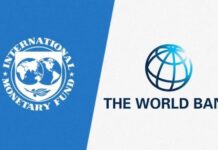MOGADISHU — Although August forecasts were more optimistic, the October to December 2017 Deyr season is now forecast to be below average, based on recent model forecasts and an increased likelihood of La Niña development during late 2017.
This will be the fourth consecutive poor season in Somalia and is likely to lead to below-average crop production and regeneration of pasture and water.
An estimated 2.34 million people are expected to be in Crisis (IPC Phase 3) and 802,000 in Emergency (IPC Phase 4) through December 2017.
Food security may be worse than previously projected, though, as the above projections were based on an August forecast of average to below-average Deyr rainfall, and rainfall is now forecast to be below average. A risk of Famine (IPC Phase 5) still exists through at least early 2018 and continued, large-scale humanitarian assistance is needed to prevent the loss of life and livelihoods.
September Gu/Karan production was originally estimated at 87 percent below the 2010-2016 average, though average to above-average Karan rainfall in August and September could lead to higher production than previously estimated.
A harvest of roughly 2,400 MT of off-season maize is expected in September/October in riverine areas of Juba and Gedo, which will improve food security outcomes for many households in these areas during the harvesting months.
The number of new cases of cholera/AWD in Somalia has sharply declined from rates observed in late 2016 and early 2017. According to UNICEF, 22 new cases of cholera/AWD were reported between September 4 and 10, down from 137 cases reported the preceding week. A total of 77,538 cases of cholera/AWD and 1,118 resulting deaths have been reported in Somalia in 2017.




